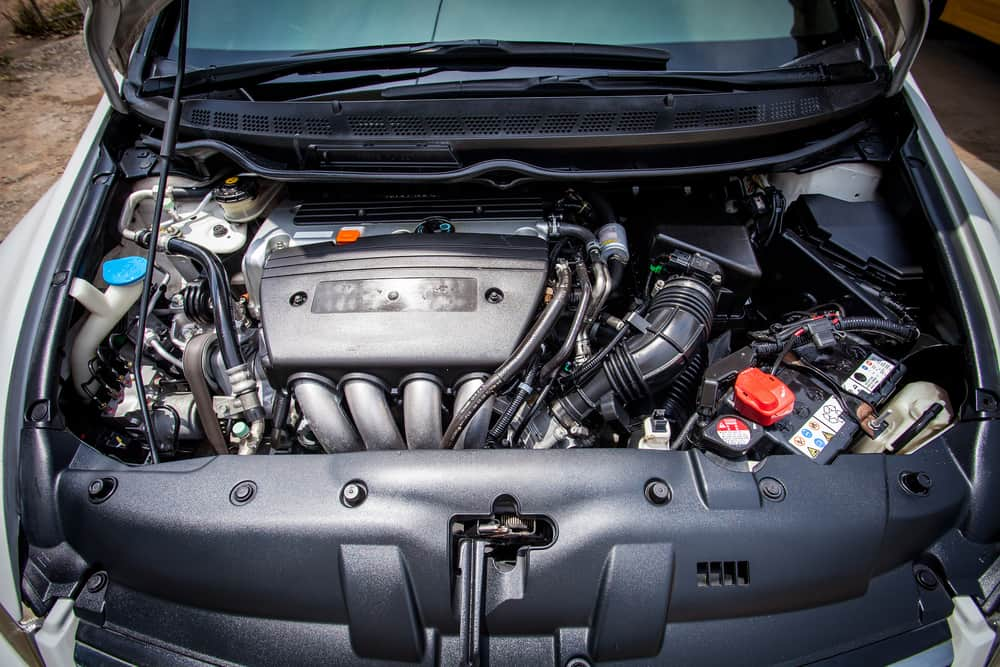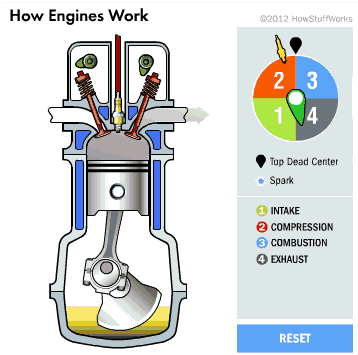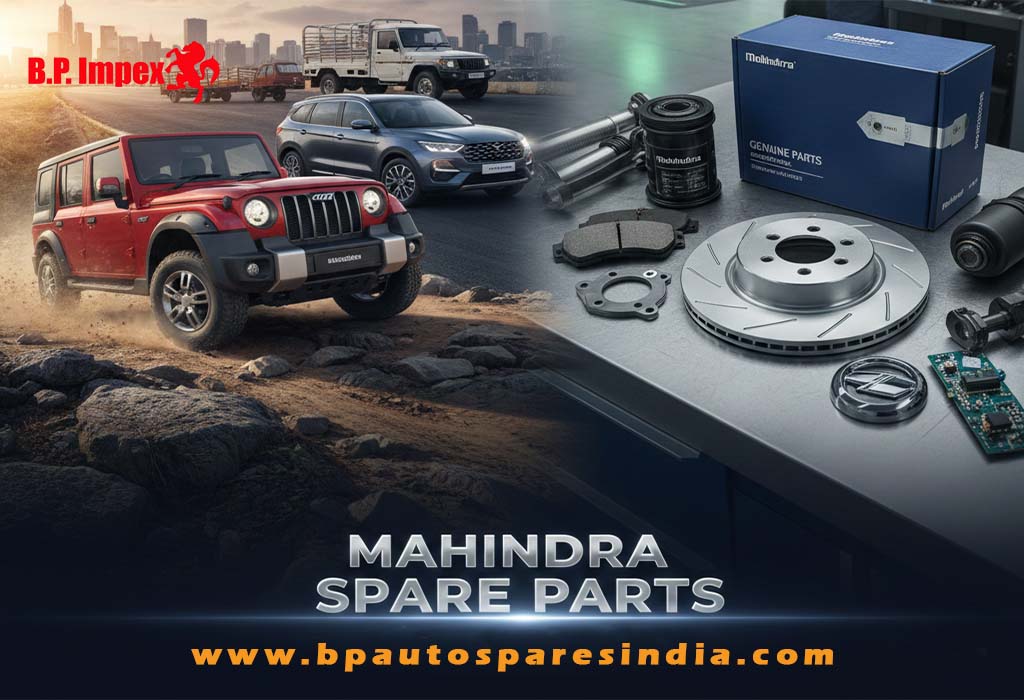The “Mahindra Scorpio Engine Parts and Functions: Working of Car Engine Explained” provides a detailed insight into the intricate mechanics of the Mahindra Scorpio. This summary encapsulates a comprehensive breakdown of essential Mahindra Scorpio parts, elucidating their functions within the engine system. From the pivotal role of pistons and cylinders in combustion to the harmonious collaboration of the crankshaft and camshaft, the post explores the orchestra of components that power the Scorpio. It emphasizes the significance of valves, fuel injectors, oil pumps, and the cooling system, elucidating how they collectively contribute to the engine’s efficiency and longevity. The summary underscores the importance of understanding these components, transforming every drive into an appreciation of the engineering brilliance behind Mahindra Scorpio’s exceptional performance.

How Mahindra Scorpio Engine Works: Engine Components
Step 1: Understanding the Core Components
Begin by familiarizing yourself with the fundamental Mahindra Scorpio engine parts. Learn about the pistons and cylinders, which play a central role in the combustion process. Understand how the crankshaft and camshaft work together, converting linear motion into rotational power and regulating valve movements.
Step 2: Exploring the Valves and Cylinder Head
Dive deeper into the functioning of valves and the cylinder head. Learn how intake and exhaust valves open and close at precise intervals, allowing the right amount of air and fuel into the cylinders while expelling exhaust gases. Grasp the significance of this process in optimizing engine performance.
Step 3: Delving into Fuel Delivery Systems
Explore the fuel delivery mechanisms of the Mahindra Scorpio engine. Understand how modern fuel injectors precisely deliver fuel to the cylinders, enhancing fuel efficiency and reducing emissions. Compare this with older carburetor systems, highlighting the advancements in Scorpio’s design.
Step 4: Understanding Lubrication and Cooling
Study the role of the oil pump and the lubrication system. Comprehend how oil circulates through the engine, reducing friction between moving parts and ensuring longevity. Delve into the cooling system, including radiators and water pumps, and learn how they maintain optimal temperatures to prevent overheating.

Step 5: Grasping the Timing Mechanism
Understand the importance of the timing belt or chain in synchronizing the crankshaft and camshaft. Learn how precise timing ensures that valves open and close at the right moments, allowing for efficient combustion and overall engine performance.
Step 6: Relating Components for Comprehensive Knowledge
Connect the dots between these Mahindra Scorpio parts. Understand how each component collaborates harmoniously, ensuring the engine operates efficiently and smoothly. Recognize the synergy between pistons, valves, fuel injectors, and the cooling system, appreciating how their seamless interaction powers the Mahindra Scorpio.
Step 7: Regular Maintenance Awareness
Acknowledge the significance of regular maintenance for these engine components. Learn about recommended service intervals, the importance of timely oil changes, and the role of genuine Mahindra Scorpio parts in ensuring the engine’s longevity and optimal performance.
By following these steps, you can gain a comprehensive understanding of how the Mahindra Scorpio engine works, appreciating the intricate design and engineering brilliance behind its performance.
How a Mahindra Scorpio Engine Works: The Fundamental Workflow
The article, “How a Mahindra Scorpio Engine Works: The Fundamental Workflow,” provides readers with a clear and concise overview of the essential steps involved in the operation of a car engine. Starting with the intake stroke, where air and fuel enter the combustion chamber, the post explains the compression stroke, highlighting the increased potency of the compressed mixture. It then delves into the power stroke, emphasizing the ignition process that generates mechanical energy and drives the car’s wheels through the crankshaft. The exhaust stroke is detailed, elucidating how burnt gases are expelled from the cylinder. The summary emphasizes the cyclical nature of these processes, forming a continuous rotation that powers the vehicle. While offering a simplified explanation, the post serves as a foundational understanding, laying the groundwork for comprehending advanced engine technologies in modern vehicles like the Mahindra Scorpio.

How a Mahindra Scorpio Engine Works: The Processes Inside the Engine Head
Inside the engine head of a car lies a complex network of processes that are crucial to its functioning. This intricate system includes components such as valves, camshafts, and pistons, all working in precise coordination. The valves regulate the intake of air and fuel, as well as the expulsion of exhaust gases. The camshaft controls the timing of these valves, ensuring they open and close at the right moments. Pistons, on the other hand, move up and down within the cylinders, compressing the air-fuel mixture and enabling combustion. This controlled series of events results in the generation of power, allowing the car to move forward. Understanding these processes inside the engine head provides valuable insight into the heart of the vehicle, showcasing the marvels of engineering that drive our automobiles.

How a Mahindra Scorpio Engine Works: Processes Inside the Engine Block

Inside the engine block of a car, a symphony of processes unfolds, giving life to the vehicle’s motion. At its core, pistons move up and down within cylindrical chambers, orchestrating a delicate balance of air and fuel. The crankshaft, intricately connected to the pistons, transforms this reciprocal motion into rotational energy, the powerhouse that propels the car. Intake and exhaust valves, meticulously timed by the camshaft, facilitate the entry of fresh air and fuel and the expulsion of burnt gases. Meanwhile, the engine block houses vital components like the crankshaft, connecting rods, and bearings, ensuring seamless movement and minimizing friction. Together, these processes inside the engine block form the mechanical ballet that transforms fuel into the kinetic energy driving us on our journeys, exemplifying the marvels of automotive engineering.
Work The 4 Strokes of the Engine:
Step 1: Intake Stroke:
During the intake stroke, the engine’s intake valve opens, and the piston moves down the cylinder. As the piston descends, a mixture of air and fuel is drawn into the cylinder from the surroundings. This step sets the stage for the combustion process.
Step 2: Compression Stroke:
Following the intake stroke, the intake valve closes, and the piston starts moving back up the cylinder, compressing the air-fuel mixture within a confined space. The compression stroke significantly increases the pressure and temperature of the mixture, making it highly combustible.
Step 3: Power Stroke:
At the peak of the compression stroke, a spark plug ignites the compressed air-fuel mixture. This ignition causes a controlled explosion, generating a rapid increase in pressure. The resulting force pushes the piston down the cylinder, creating mechanical work. This downward movement of the piston is what drives the engine’s crankshaft, converting the linear motion into rotational energy.
Step 4: Exhaust Stroke:
After the power stroke, the exhaust valve opens, and the piston moves back up the cylinder again. As it rises, it pushes out the leftover exhaust gases from the combustion process into the exhaust system. This prepares the cylinder for the next intake stroke, starting the cycle anew.
Understanding and appreciating these four strokes – intake, compression, power, and exhaust – provide a foundational comprehension of how internal combustion engines operate, whether they power cars, motorcycles, or other machinery.
How a Mahindra Scorpio Engine Works: The Oil Sump


The oil sump, a vital component in car engines, serves as the reservoir for engine oil, ensuring the engine’s proper lubrication and cooling. Situated at the bottom of the engine, it collects and stores the oil when the engine is not running, allowing the oil pump to draw it up for lubrication during operation. The oil sump also features an oil pan that acts as a protective shield, guarding the engine’s intricate components from debris and contaminants. Moreover, the sump plays a crucial role in maintaining the engine’s temperature, preventing it from overheating. Regular oil changes and proper maintenance of the oil sump are essential to ensure the engine functions smoothly, highlighting the significance of this unassuming yet indispensable part of every car engine.






Leave a Reply